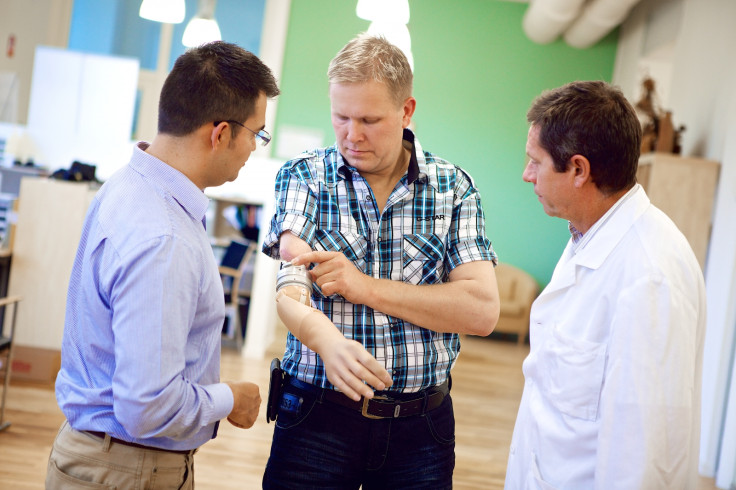Scientists Fuse Man and Machine: Mind-Controlled Robotic Arm Prosthetics Now 'Clinical Reality'

Man and machine have been fused together in a long-term stable state, with mind controlled prosthetic arms now a "clinical reality".
Published in the journal Science Translational Medicine, researchers said that using the osseointegration implant technique gives people who have lost limbs new opportunities to use robotic prostheses controlled by implanted neurotransmitter interfaces in daily life.
Lead author Max Ortiz Catalan, research scientist at Chalmers University of Technology in Sweden, said: "We have used osseointegration to create a long-term stable fusion between man and machine, where we have integrated them at different levels.
"The artificial arm is directly attached to the skeleton, thus providing mechanical stability. Then the human's biological control system, that is nerves and muscles, is also interfaced to the machine's control system via neuromuscular electrodes. This creates an intimate union between the body and the machine; between biology and mechatronics."
Benefits of the technology include a greater range of motion, elimination of pain caused from the socket, increased sensory feedback, and it can be used all day, every day. The electrodes also mean it is less effort to control.
Last year, a Swedish man became the first person in the world to receive a prosthetic arm with a direct connection to bone, muscle and nerves.

The man's arm had been amputated over 10 years ago. He had been using a robotic prosthesis but this was replaced with the new skeletal attachment which has a control system connected to his brain.
His job as a truck driver is physically demanding and he said since the replacement, he has been able to cope far better – being capable of a range of actions from operating heavy machinery to unpacking eggs and tying his children's skates.
He is also participating in a study that aims to achieve long-term sensation through a prosthetic attachment.
Catalan said: "Reliable communication between the prosthesis and the body has been the missing link for the clinical implementation of neural control and sensory feedback, and this is now in place.
"So far we have shown that the patient has a long-term stable ability to perceive touch in different locations in the missing hand. Intuitive sensory feedback and control are crucial for interacting with the environment, for example to reliably hold an object despite disturbances or uncertainty. Today, no patient walks around with a prosthesis that provides such information, but we are working towards changing that in the very short term."
How osseointegrated prosthetics work
The robotic prosthetic limb construction begins with surgically attaching a titanium implant to the bone surface. This implant becomes anchored through a process called osseointegration whereby bone-forming osteoblasts and other supportive tissue grow into pores in the implant.
A percutaneous (meaning it protrudes through the skin) titanium component is attached to the implant, acting as a metallic bone extension. The rest of the robotic prosthesis is fixed on to this extension.
Electrodes implanted in the nerves and muscles record and transmit signals through the osseointegrated implant where they are translated to robotically actuated motions.
© Copyright IBTimes 2025. All rights reserved.

















